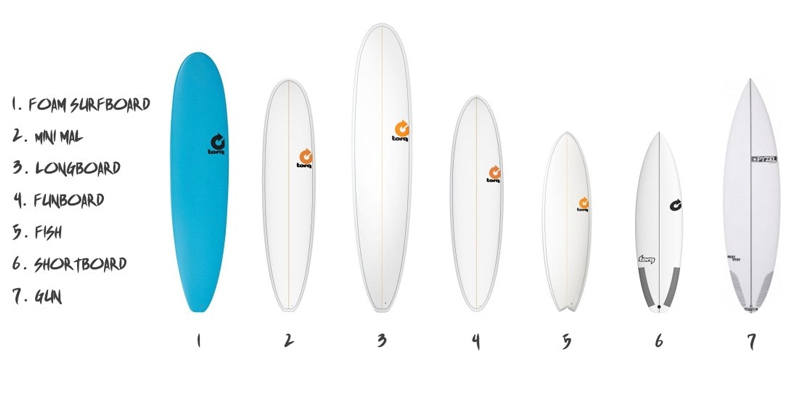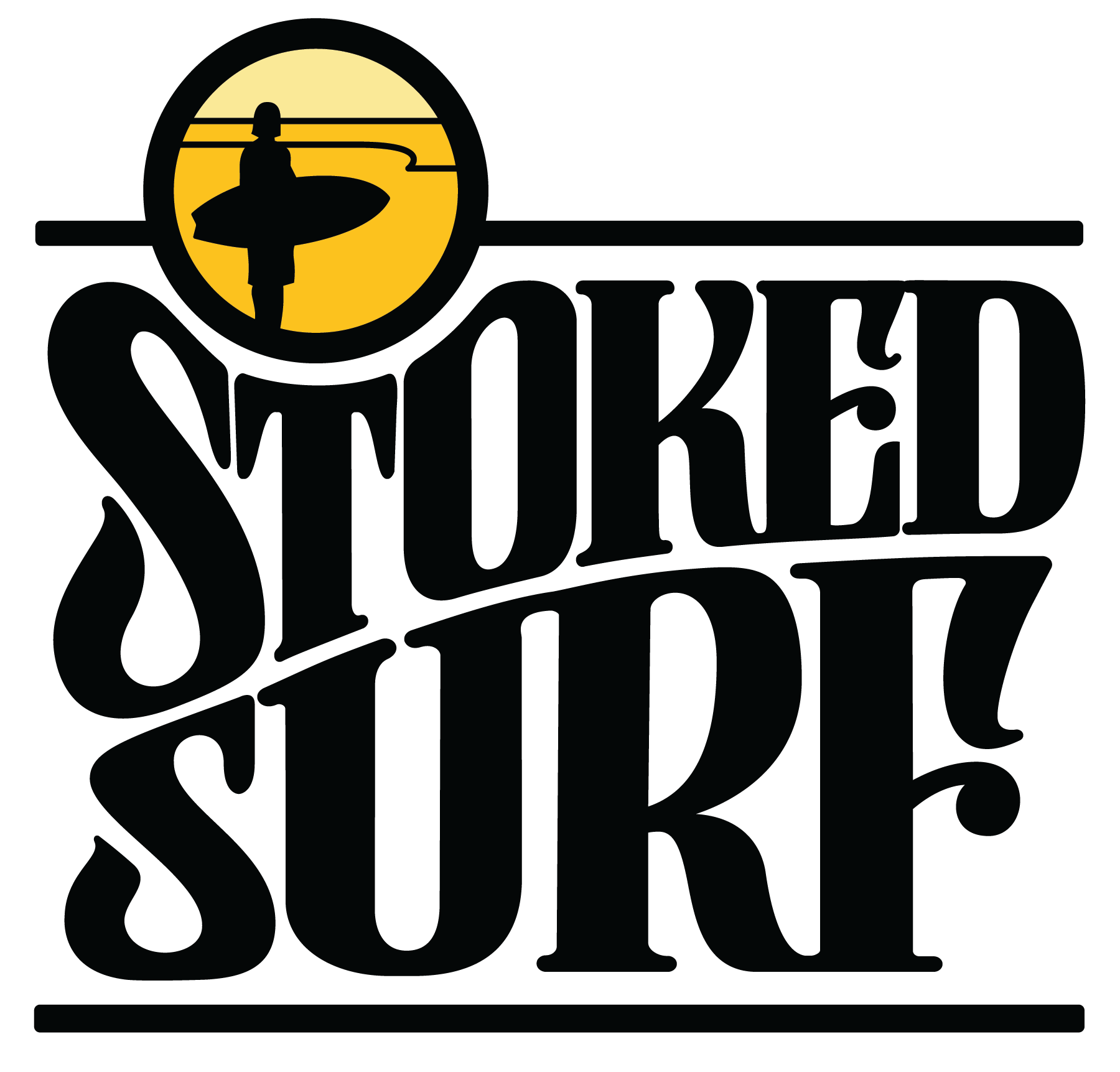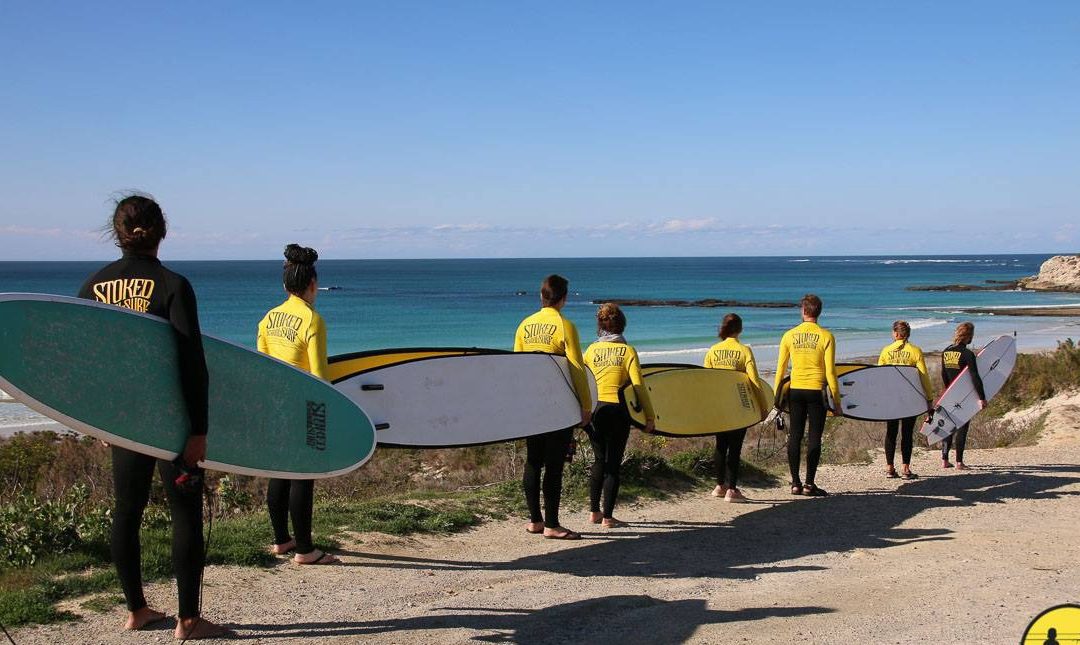So you’ve decided you’re going ahead with surfing lessons, that’s awesome! Whether you’ve decided to buy your first surfboard or you’re renting one from the surf school, you’re probably wondering which is better for a beginner surfer such as yourself, a soft- or hard surfboard? We’re here to give you a better understanding as to why each has a different role to play in any beginner surfer’s journey.
Softboard
Chances are you rode a surfboard somewhere in your life or you’re completely new to the whole experience, and with that in mind, if you have ridden a surfboard before, it’s likely you rode a “foamie”. A foamie or softboard is a soft surfboard most commonly used as a beginner board.
Why Use a Softboard?
When choosing a surfboard for your first lesson or as a newbie surfer, volume plays a critical role in the process. This is where a soft surfboard comes into play.
Volume & Buoyancy
A soft surfboard’s large volume plays a key role in helping a new surfer learn how to balance on the board. The foam material adds buoyancy which can make it easier for beginner surfers to paddle and ultimately catch a wave.
Decreased Risk of Injury
As most surfboards are quite large and difficult to operate in the busy waters, chances of getting hurt are high. With a foam surfboard, your risk of injury decreases immensely when learning how to surf on this particular board.
How is this possible?
When you collide with the board, the hits are padded so you won’t get as hurt as with a normal, hard surfboard. This will also benefit the surfers around you.
Cost
As foamies are mostly used by beginner surfers, don’t expect a sky-high cost for these boards. Essentially, you won’t be paying a lot for these boards making them an added bonus when chosen as your board.
Cons of a Soft-top Surfboard
As with most things in life, softboards do have their cons.
Size & Weight
A softboard is one of the biggest and heaviest surfboards out of all the boards you get. You’ll have to consider where to store it when you’re not in the water, how you’re going to transport it to the beach, and if you will be capable of carrying the board on your own.
Below is a great graphic by The Wave Shack on the different surfboards available.

Hardboard / Hard Tops
We’ve discussed why a soft-top surfboard is your best option when beginning your surfing journey, but let’s have a look at hardboards.
Since you’re most likely starting out on a softboard, you’ll probably become a regular surfer and this will cause you to quickly outgrow your foam surfboard. Since you’re becoming more experienced and you’re starting to perfect your surfing skills, board performance and aesthetics will most likely become a priority for you. You’ll also want to show off your killer board, right?
Different Types of Hard Boards
Polyester Resin Type
The more traditional or standard type of surfboard manufactured over the years. This type of surfboard has soft foam shaped into it and covered with layers of polyester resin and fibreglass cloth, giving the surfboard a harder outer layer making it extremely waterproof.
This type of surfboard is fairly easy to carry as it’s not heavy and looks just like a traditional surfboard.
However, these boards can turn slightly yellow after spending time in the sun for long periods, and they can ding or break easily, again, not ideal for beginners.
Moulded Epoxy Sandwich Type
Because of the mould used to shape the surfboard, it’s often called a “Pop-out”.
The Moulded Epoxy Sandwich type surfboard is very durable and usually allows its owner to remove its fins.
Epoxy Resin with Fibreglass Cloth Type
Although similar to the polyester boards, it uses a different foam for its core but still has a fibreglass cloth outer layer.
These surfboards are even lighter than the polyester resin surfboards and they’re also more durable. They are also shaped like the traditional surfboards and they can easily be repaired if they get a ding or crack.
Why Hardboards are Better for Professional Surfers
Modern surfboards are typically made of polystyrene foam covered by layers of fibreglass cloth. This makes their outer surface extremely hard, making them unfit for beginner surfers.
Fragile in Beginner Surfer’s Hands
As these boards are quite easy to get a dent or even break, it’s not ideal for beginner surfers to make use of these boards as they’ll most likely be falling off the board 99% of the time.
Paddling Power
As these hardboards aren’t as easy to paddle with as softboards, you’ll need some paddling power when making use of these boards.
Upgrading Your Softboard to a Hardboard
If you’ve been surfing for a while and you’re more comfortable on the water, you might want to upgrade from your softboard.
For beginner surfers, the best boards to upgrade to are the funboard (Mini Malibu) or the Mini Malibu’s big brother, the longboard (Malibu).
As a smaller version of the longboard, the Mini Malibu is the preferable option if you are paddling through larger surf as they are easier to operate. This board is great when you’ve moved on from the foam surfboard and you’re ready to start learning turns.
Another thing to keep in mind with progressing from a softboard to a hardboard is increased risk of injury. As you’re moving away from the softer foam material, surfboards with harder outer layers can become quite painful when they hit you during your surfing.
Which One Should You Choose as a Beginner?
As we’ve mentioned, the better option when choosing between a softboard and hardboard is definitely the softboard. Since you’re just starting out it’s a given that you’ll be falling off your board quite a lot before becoming better at surfing.
The foam surfboard will save you some money in the long run and you’ll avoid massive injuries when you’re learning to surf on it. Once you’re comfortable with surfing, you can choose to upgrade to a hardboard of your choosing. Although, try to stay away from anything shorter than the funboard or longboard until you’re 100% comfortable surfing larger waves.
Our mission is to ensure you don’t miss out on the stoke of surfing here in the Mother City. Get in touch with our team to start riding waves no matter your surfing level or experience.

